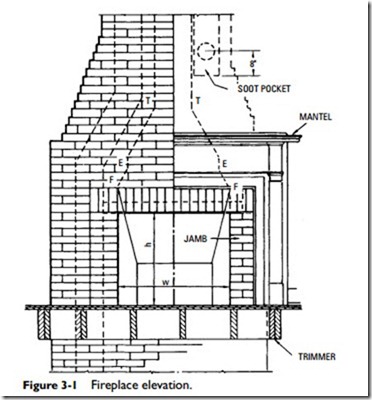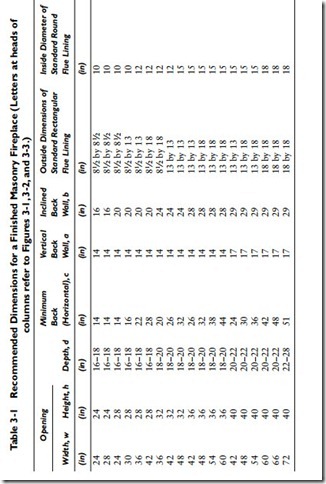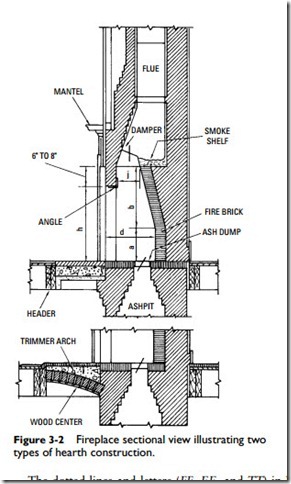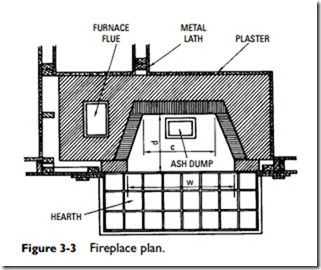Until recently, fireplaces, stoves, ranges, wood heaters, and similar heating apparatus were the only sources of heat for cooking, domestic hot water, and personal comfort. These apparatus generally burned solid fuels, such as wood, coke, or the different types of coal, but many later models could also be modified to burn fuel oil, gas (both natural and manufactured), and kerosene.
Central heating and the availability of clean, inexpensive, non- solid fuels (natural gas, oil, and electricity) have relegated these heating apparatus to a minor, decorative role except in remote rural areas of the country. At least this has been the situation until the late 1960s. The growing interest among people in leaving the cities and returning to the land, and the rising cost and potential scarcity of the more popular heating fuels, has brought renewed interest in the solid-fuel-burning fireplace, stove, range, and heater.
Fireplaces
A fireplace is essentially a three-sided enclosure in which a fire is maintained. The heat from the fire enters the room from the open side of the enclosure. The traditional masonry fireplace is a recessed opening in the wall directly connected to a chimney. Modern pre- fabricated, freestanding fireplaces resemble stoves, but their operating principle is still that of the traditional fireplace; that is to say, heat is radiated from the opening out into the room.
Although a fireplace is not as complicated an apparatus as the furnace or boiler of a modern central heating system, its location, dimensions, and construction details still require careful planning if maximum heating efficiency and trouble-free operation are desired. These aspects of fireplace design and construction are examined in the sections that follow.
Fireplace Location
The location of the fireplace is determined by the location of the chimney. Unfortunately, chimney location—particularly in newer homes— is too often dictated by how the chimney will look, rather than how it will work. As a result, the chimney is often made too low or located where it may be obstructed by a section of the house or building. The top of the chimney should be at least 2 feet higher than the roof.
Fireplace Dimensions
The principal components of a masonry fireplace are described in
the next section (Fireplace Construction Details). The following components are important to the operation of a fireplace:
1. The opening
2. The throat
3. The smoke chamber (and shelf)
4. The damper
5. The flue
These components are interdependent and must be properly dimensioned with respect to one another or the fireplace will not operate properly. Table 3-1 lists typical dimensions for finished masonry fire- places, and these dimensions are identified in Figures 3-1, 3-2, and 3-3.
The dotted lines and letters (FF, EE, and TT) in Figure 3-1 are used to indicate the dimensions of the throat, smoke chamber, and flue. The throat (or damper opening) is identified by the line FF in Figure 3-1. The throat should be approximately 6 to 8 inches (or more) above the bottom of the lintel. The area of the throat should be not less than that of the flue, and its length should be equal to the width of the fireplace opening.
Starting approximately 5 inches above the throat (that is, at line EE), the inner wall surfaces should gradually slope inward approximately 30° to the beginning of the chimney flue (line TT in Figure 3-1).
The smoke chamber is the area between the throat and the beginning of the flue (that is, between lines EE and TT in Figure 3-1). The smoke shelf is the area extending from the throat to the line of the flue wall (see Figure 3-2). This dimension will vary depending on the depth of the firebox. The damper opening (throat) should never be less than the flue area.



